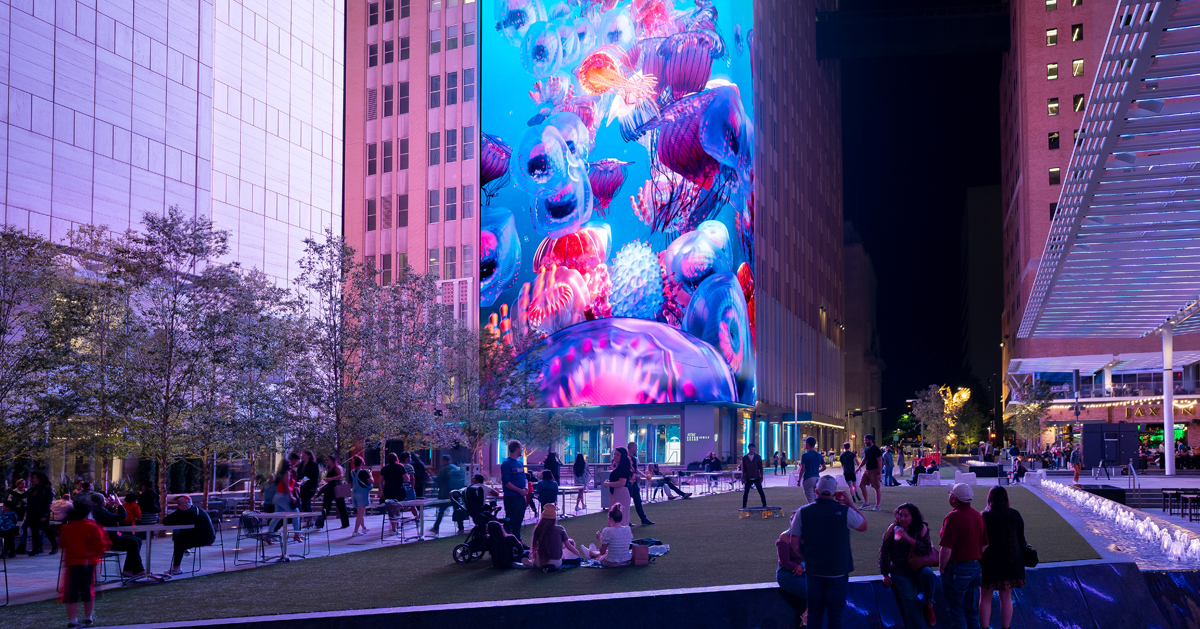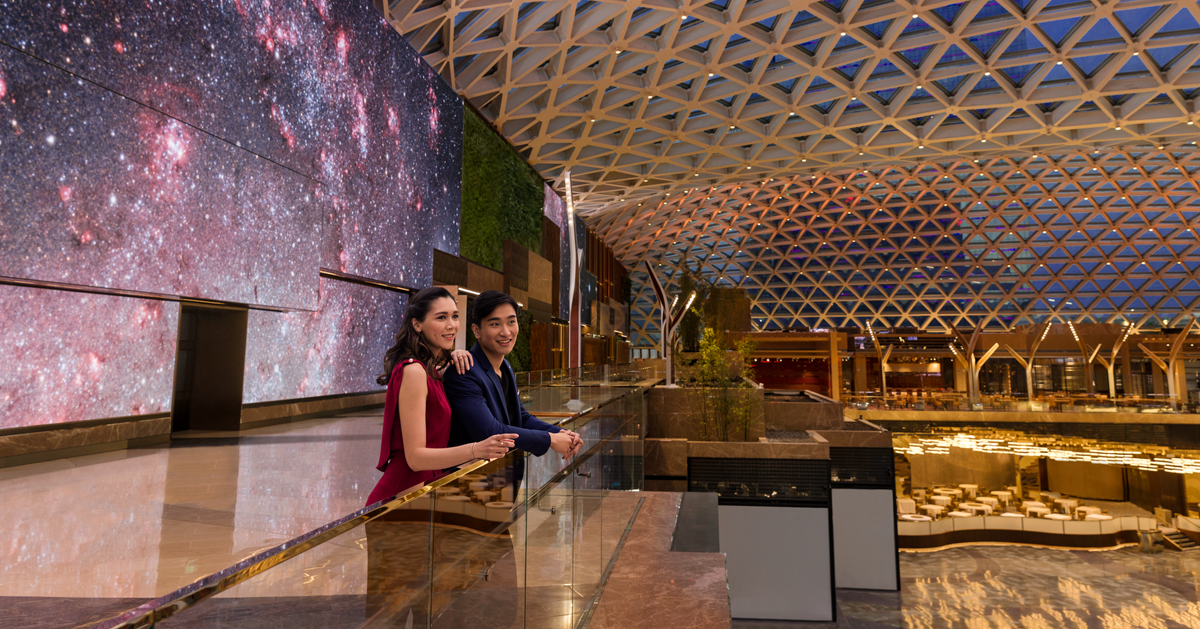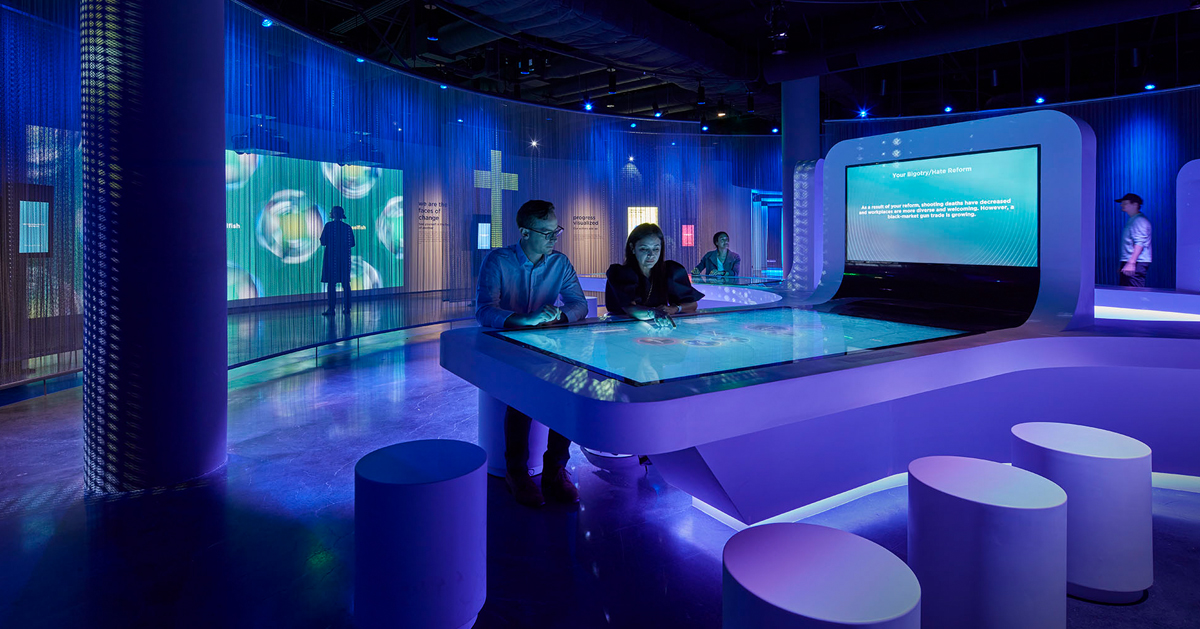
The Guest Experience: How Immersive AV Technology Captivates Audiences
In every venue, museum, attraction, and spectacle, the guest experience is where everything starts. The expectations of those guests have changed dramatically for many reasons—the pandemic, the ability to consume and experience content anywhere and belief that brands should deliver positive interactions. The feelings of consumers around customer experience (CX) now represent less tolerance for it being poor. In fact, 52% of them will walk away after a bad experience, and 56% said the quality of service has a higher impact on their positive feelings about a brand than any other criteria.
Those who visit location-themed venues and attractions are no longer moved or captivated by experiences that aren’t immersive and multi-sensory. They seek something they can’t feel anywhere else or through their personal devices.
To turn up the guest experience, those designing and creating the spaces turn to the next generation of audiovisual (AV) technology. Collaboration between planners, builders, and creatives is critical in achieving stimulation and captivation through immersive technology.
So, how exactly has the guest experience evolved, and what AV systems will meet these new demands?

The Evolving Guest Experience
At the dawn of technology's leading role in out-of-home experiences, visitors had little expectations because it was all new. It was easier to draw someone in with lighting, audio, and video. As with anything, the experiences had to grow bigger. Much of this is due to the technological innovation now accessible to anyone. Everyone walks around with this computer in their pocket. Video games have 3D effects, and flat-screen TVs air in HD. Attention is more fragmented than ever, forcing attractions to enhance the experience in every way.
If most people can have these engaging experiences at home or on the go, it changed their expectations around physically visiting venues. They want bigger and better as well as personalization. These are broad assumptions, but there’s data to back up the shift.
For example, 80% of customers agree that the experience is just as important as the product or service. In response to their feelings about immersive experiences specifically, 61% of respondents said they’d be more likely to make purchases for spaces using this technology. Another 47% agreed that immersive technology makes them feel more connected to a brand. They long for something that evokes emotion and brings them into the story. No longer do they want to be spectators. When spaces achieve this, they will become unforgettable moments.
Venues still have the potential to wow guests, and there’s pent-up demand for traveling and visiting attractions. As the world of entertainment and travel rebound, you have an opportunity to create a truly unique experience.
So, what technology will support these installations?

Key AV Technologies That Deliver Impactful Guest Experiences
AV technologies drive the next generation of guest experiences. Here are the pieces that come together to build them.
LED Display Innovations
LEDs continue to evolve with Transparent LEDs and MicroLEDs leading the way. Transparent LEDs are ideal for location-based or themed entertainment as well as purpose-built experiential design applications. They invite viewers to become part of a bright, enchanting world with vivid graphics they can see through. Placement of these is typically behind glass and are viewable at a great distance.
MicroLEDs are the latest iteration of fixed-display technology. They use millions of tiny, individually addressable diodes to create the image.
Summit One Vanderbilt uses a 50-foot-long 1.2mm MicroLED in its Unity exhibit, where guests scan wristbands to bring up the previous 3D scanned image of their face to watch it dance among the clouds.
Interactive Technology and Displays
Immersive spaces should have interaction elements, including digital signage, wayfinding and video walls. This technology enables engagement and amplifies the experience. Visitors become part of it. Some unique ways to drive interactivity involve infrared (IR) for gesturing, Projected Capacitive Touchscreens (PCAP) to improve touch sensitivity and Total Internal Reflection (FTIR), which captures user pressure against acrylics screens to deliver content.
One of the most inspiring uses of touchscreens is in the Social Lab at the Museum of Tolerance. “The Forum” presents a 100-point capability touchscreen for group interactions in debating today’s social issues.

Projection Mapping
Any object can be a display surface with projection mapping. It’s crucial to making a space immersive and has many applications, from buildings to stages to small objects.
At the Farm Wisconsin Discover Center, projection mapping on a cow is probably one of the most unique applications. It fits with the theme and gives visitors a more authentic experience of farm life.
Triggering Technology
The guest experience is not complete without sensing technology that tracks their motion and provides another opportunity for interactivity. When LIDAR feels the person is in the space, it cues content to respond to their movements.
Illuminarium Atlanta leverages LIDAR to track visitor movements and add interactivity as they make their way through the 30,000-square-foot sensory space.
Directional Audio: Beam-Foaming and Haptic Speakers
The world of audio has new technologies, as well. Beam-forming is one example. It allows for specific shaping and steering of beams in two dimensions. As a result, sound fields can optimally cover audience areas of any size or shape. This sound localization creates a realistic soundscape.
Haptic speakers are another type of directional audio. It’s like “reaching and touching” sound and provides a more inclusive experience for visually impaired people.
Beam-forming is also part of Illuminarium Atlanta. The technology creates a 3D soundscape personalized to each visitor. Low-frequency haptic speakers, built into the floor, deliver rumbling effects for a unique guest experience.
-jpg.jpeg)
Control Systems
Control systems are the core of AV system management. With so many advanced AV technologies involved in most installations, it’s become a challenge. However, virtualization offers a way to integrate disparate systems, monitor availability and reduce the hardware required on-site. While it’s in the background, it dramatically impacts experiences.
You’ll see this in real life at the Snorri Touren Dark Ride, which takes visitors on a 360-degree immersive experience in a small space. A virtualized control system ensures there’s nothing left to the imagination—riders see it all.
Personalized AV
Can guests really have a one-to-one experience? Yes, it’s possible to get more personalized, and that’s what visitors experience at Summit One Vanderbilt, an immersive, multi-sensory observation deck.
Before heading to the top of the New York City skyline, visitors use custom facial scanners and QR-enabled wristbands to capture their faces. Later, when they are in the “Unity” installation, they scan their wristbands, which position their face visualized in the clouds on a 50-foot-long 1.2mm Samsung MicroLED.
Reimagining Your Guest Experiences in Seven Steps
As you begin to work on the guest experience in your spaces, you can navigate this by using seven key steps:
- Storytelling: What are the narratives of the experience?
- Guest journey: What journey do guests take, beginning before they enter your venue?
- Polysensory technologies: What pieces are necessary to engage all senses?
- Infrastructure: How will you build, integrate and deploy technology?
- Technology platforms: What applications will be part of the installation?
- Investment strategy: Where should you spend your budget dollars?
- Support and maintenance: What’s the plan for long-term sustainability?
To begin this process, we invite you to schedule a complimentary charrette session to collaborate and brainstorm with technology design consultants. Find out what’s possible and get inspired to evolve the guest experience.
Alexander Hann
Alexander Hann, Communications Specialist, understands the challenges that clients face when they are making decisions about technology. He uses his extensive experience of communicating complex concepts to write about the latest developments in technology in a way that clearly explains benefits for business and technical decision-makers.










.jpg?width=1500&height=995&name=ELC501_N17_medium%20(1).jpg)


![[Get more ideas on using projection solutions to amaze and captivate]](https://no-cache.hubspot.com/cta/default/5104351/fd5fb425-157e-4ced-b303-5386f81c82ad.png)







































































































































































































